You can apply diatomaceous earth effectively using five proven methods. First, dry dust indoor areas with a flour sifter, targeting cracks and corners with light, even coverage. Second, create a wet spray by mixing 4 tablespoons per gallon of water for plants and outdoor surfaces. Third, use specialty tools like turkey basters for targeted application in specific problem areas. Fourth, sprinkle thin layers on carpets and upholstery, letting it work for 24-48 hours. Fifth, establish perimeter barriers around your home’s foundation and entry points. These techniques will maximize your pest control success while keeping your family safe.
Dry Dusting Method for Indoor Areas
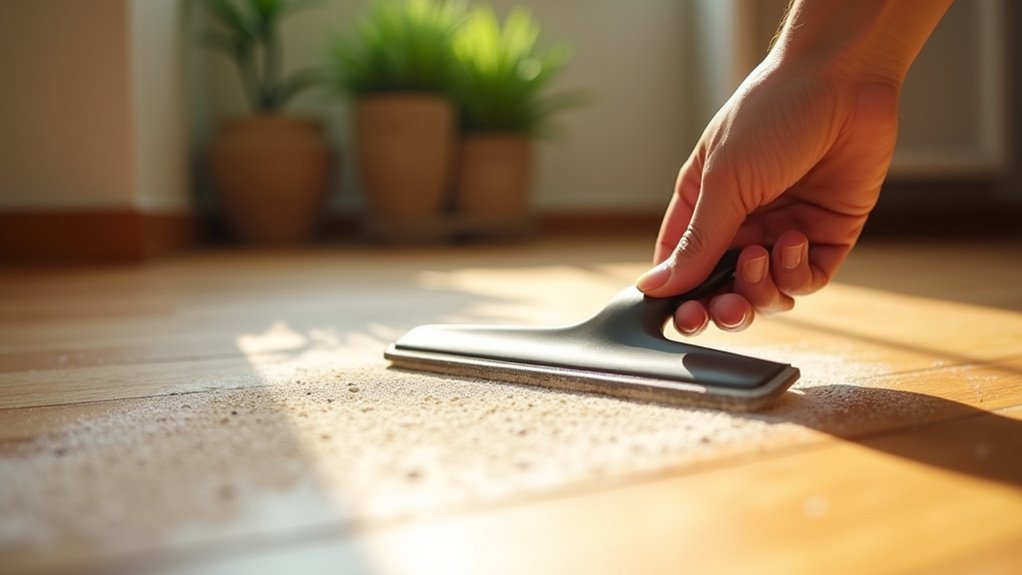
When applying diatomaceous earth indoors, you’ll achieve the best results by using a flour sifter to distribute a light, even layer of food-grade diatomaceous earth in targeted areas.
This effective dusting method guarantees proper coverage in cracks, corners, and around pet bedding where pests typically hide.
Remember that light dusting works better than thick layers, which allow insects to walk around the powder without contact.
Light dusting ensures insects must walk through diatomaceous earth rather than around thick piles that create escape routes.
Always wear a face mask during indoor application to prevent inhaling fine dust that can irritate your respiratory system.
Let the powder sit for 24-48 hours for maximum impact before vacuuming dead insects and excess material.
Keep family members and pets away from treated areas until cleanup is complete, maintaining a safe environment throughout the process.
Wet Spray Application for Plants and Outdoor Surfaces
How can you effectively apply diatomaceous earth when dry dusting isn’t practical for your outdoor pest problems? The wet application method offers superior control for challenging conditions.
Mix 4 tablespoons of food-grade powder with 1 gallon of water, ensuring thorough dispersion before use. This technique prevents wind from scattering the powder and reaches hard-to-access areas on outdoor surfaces.
Use a spray bottle or garden sprayer to distribute the solution evenly across affected areas. Apply a thick coat to both tops and undersides of infested plants for best pest control results.
The wet method stays in place during breezy conditions, making it ideal for outdoor applications.
Remember that reapplication becomes necessary after rainfall, as moisture reduces diatomaceous earth’s effectiveness on treated surfaces.
Targeted Application Using Specialty Tools
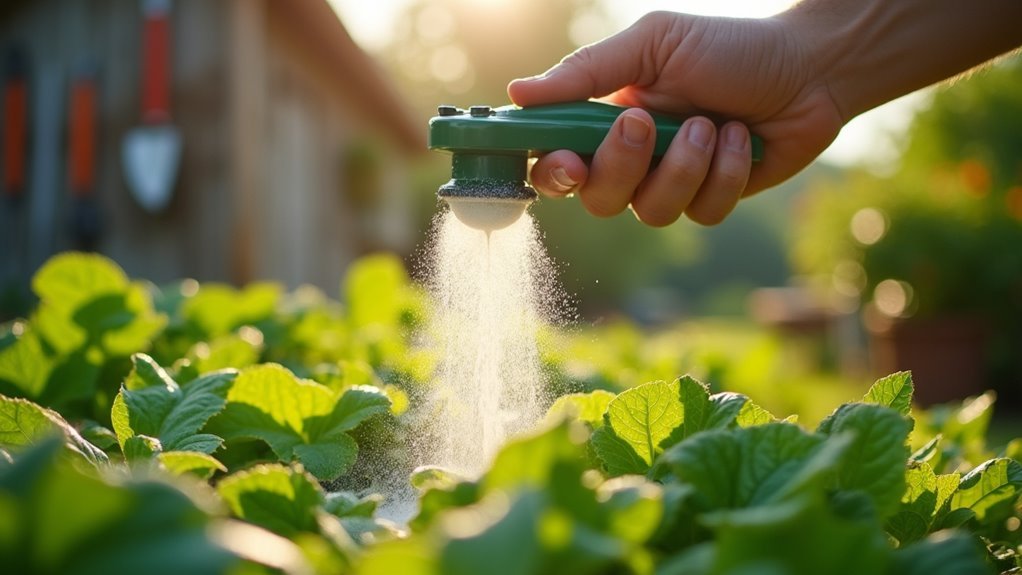
While wet applications work well for broad coverage, specialty tools offer precise control for targeted pest management.
Garden dusters and powder applicators provide the most accurate diatomaceous earth application, ensuring even distribution in hard-to-reach spaces while minimizing waste. You’ll find turkey basters and salt shakers excellent for targeted treatment in cracks and corners where pests hide.
For controlled application without airborne dust, use paintbrushes to focus on specific problem areas. A flour sifter creates fine, even coverage for cabinets and window sills.
You can transform nylons or mesh bags into effective deodorizers by filling them with diatomaceous earth, allowing gentle powder release in closets and storage areas. These specialty applicators maximize effectiveness through precise distribution.
Carpet and Upholstery Treatment Technique
Carpets and upholstery harbor pests like fleas and bedbugs deep within their fibers, making them prime targets for diatomaceous earth treatment.
To apply diatomaceous earth effectively, sprinkle a thin layer of food-grade powder evenly across affected areas. Focus on high-traffic areas and pet bedding where pests commonly hide. Don’t create thick barriers that insects can navigate around.
Let the treatment technique work for 24 to 48 hours, allowing the powder to dehydrate hidden pests.
After this period, use a vacuum cleaner with a HEPA filter to remove all residue and dead insects thoroughly. This prevents airway irritation while ensuring effective pest control.
Reapply diatomaceous earth every two weeks or after vacuuming to eliminate newly hatched pests and maintain continuous protection.
Perimeter and Crack Treatment Method
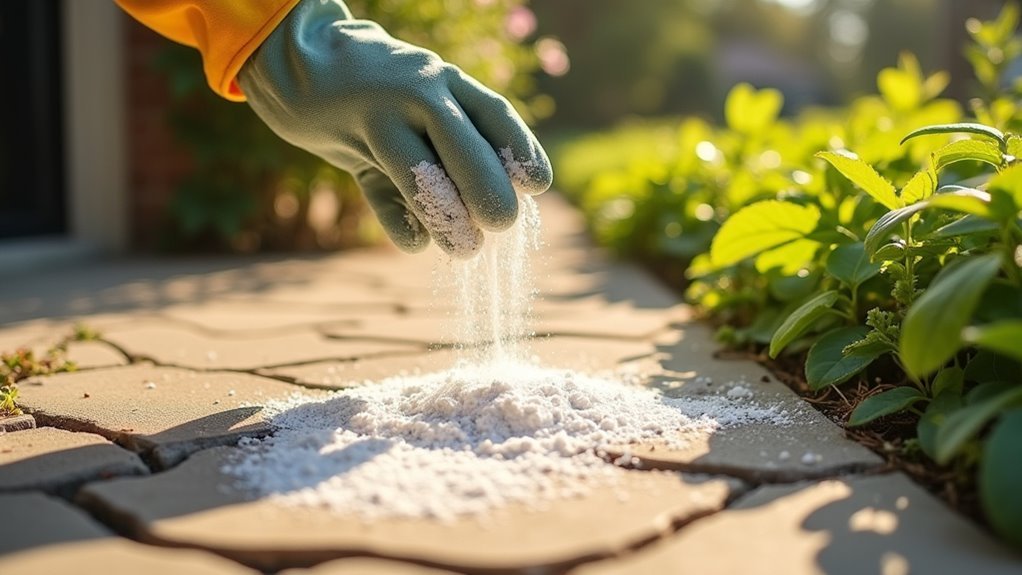
Beyond treating interior surfaces, you’ll need to establish a protective barrier around your home’s exterior to prevent pests from entering in the first place.
The perimeter and crack treatment method involves creating a diatomaceous earth barrier along your foundation and in entry points where insects commonly infiltrate.
Create a strategic diatomaceous earth perimeter around your home’s foundation and common insect entry points for maximum pest prevention effectiveness.
For effective application, apply a thin layer of diatomaceous earth around doorways, windowsills, and wall bases. Use a flour sifter to guarantee the DE is evenly distributed, maximizing contact with crawling pests.
Focus on cracks and crevices where insects typically gain access.
You’ll need to reapply diatomaceous earth after rain or heavy cleaning since moisture reduces its pest control properties.
Regularly inspect treated areas to maintain barrier integrity and address new pest activity promptly.
Frequently Asked Questions
What Is the Best Way to Apply Diatomaceous Earth?
You’ll get best results using a flour sifter for even distribution in dry conditions. Target cracks and crevices where pests hide. For windy areas, mix four tablespoons with water and spray.
What Not to Mix With Diatomaceous Earth?
You shouldn’t mix diatomaceous earth with water, oils, chemical pesticides, or wet substances. These combinations reduce its powdery texture and desiccation properties, making it ineffective against pests and compromising its natural pest control abilities.
Is It Better to Apply Diatomaceous Earth Wet or Dry?
You’ll get better results with dry application for undisturbed areas and cracks, but wet application works best in windy conditions or hard-to-reach spots where powder adherence is challenging.
Do I Need to Wear a Mask When Using Diatomaceous Earth?
You should wear a mask when applying diatomaceous earth to prevent inhaling fine dust that can irritate your throat and respiratory system, especially in enclosed spaces or with larger quantities.
In Summary
You’ve now got five proven methods to tackle pest problems with diatomaceous earth. Whether you’re dusting indoor surfaces, spraying outdoor areas, treating carpets, or sealing perimeters, you’ll see results when you apply it correctly. Remember to use food-grade DE and wear protective gear during application. Don’t expect instant results—it’ll take a few days to work effectively. Reapply as needed, especially after rain or cleaning.

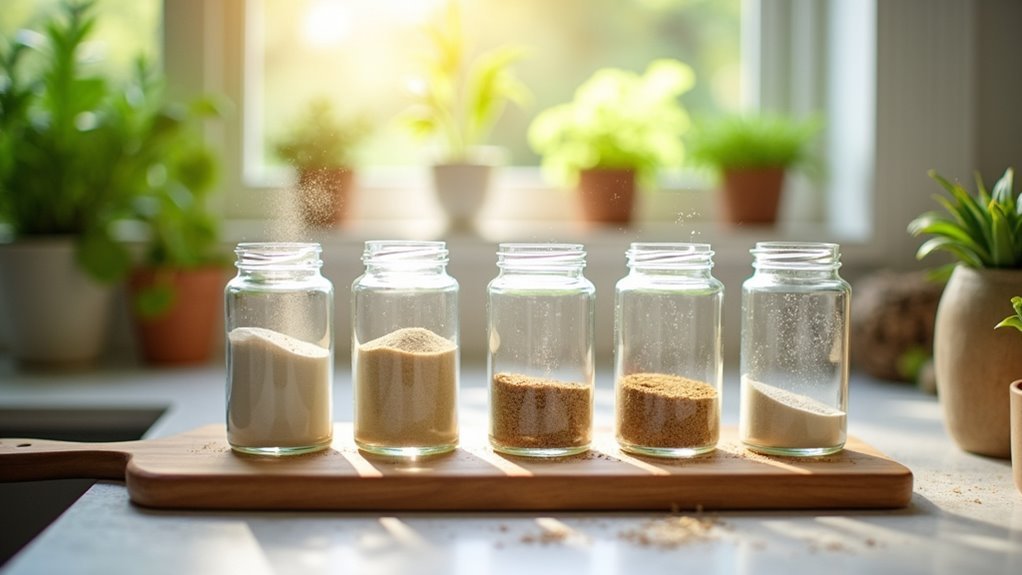
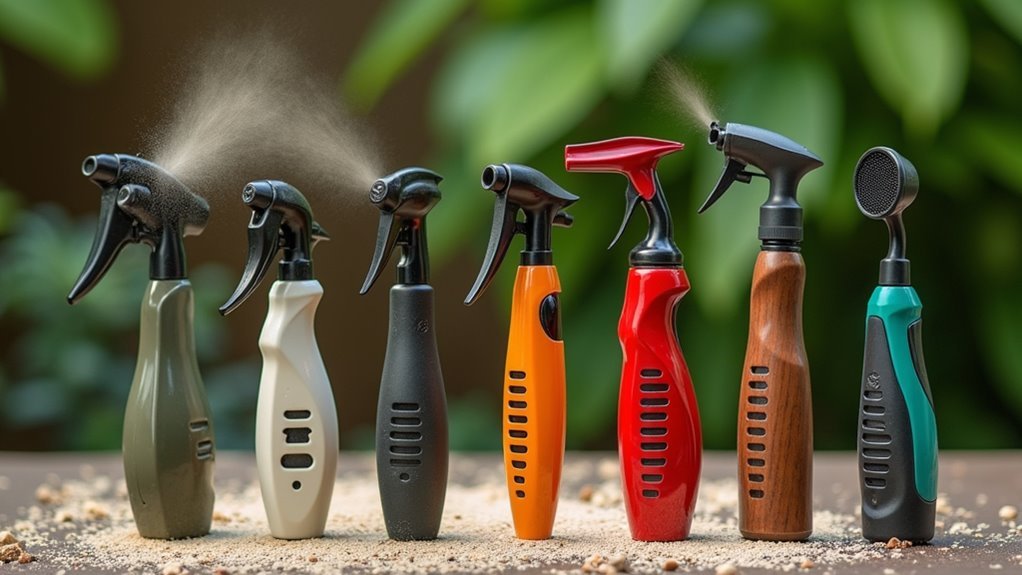
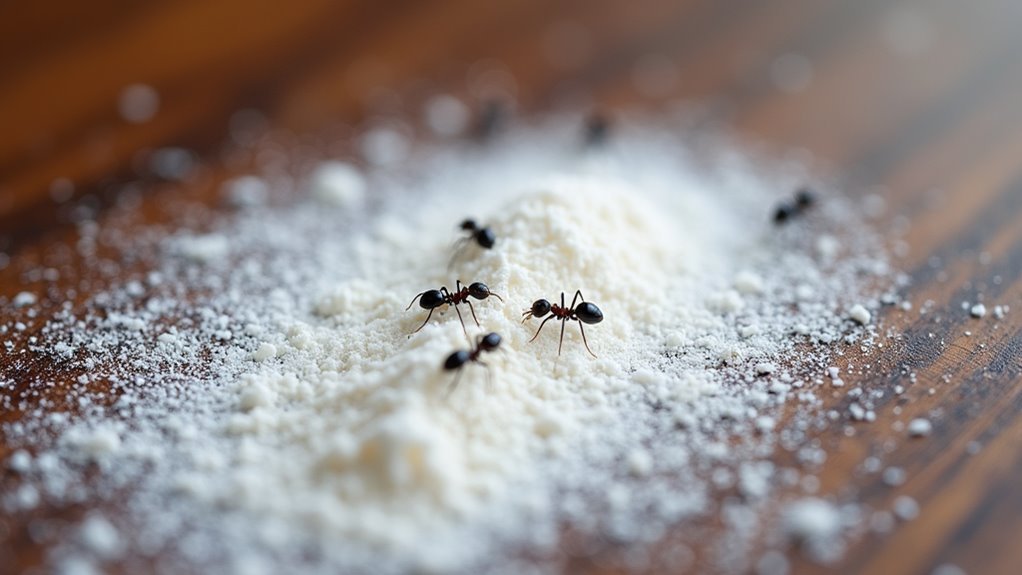
Leave a Reply